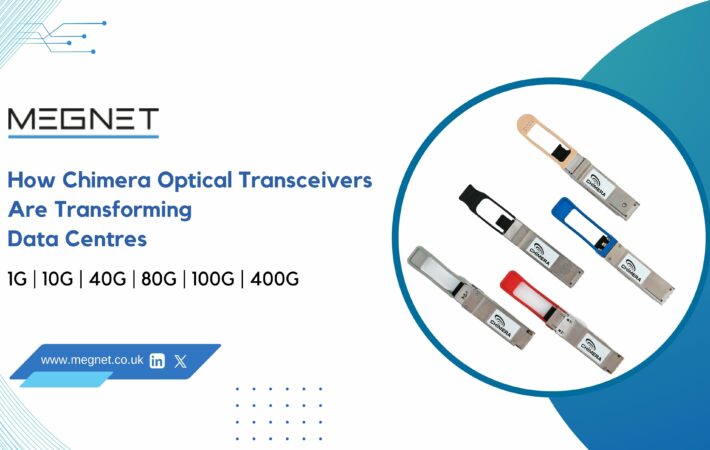
The European Small Form-factor Pluggable (SFP) market is undergoing a remarkable transformation, driven by a dynamic landscape of trends and technological advancements that are reshaping the optical transceiver industry. In this comprehensive article, we will delve deeper into the top ten trends that are influencing the future of this market. Moreover, we will incorporate extensive data, statistics, and analysis to provide a holistic view of the European SFP market.
The future of the SFP optical transceiver market looks promising with opportunities in the telecommunication, data fibre, and enterprise applications. The global SFP optical transceiver market is expected to reach an estimated $0.25 billion by 2028 with a CAGR of 6.5% from 2023 to 2028. The major drivers for this market are growing demand for hot-swappable and compact media connectors, which enables rapid fibre connectivity and increasing use of these transceivers as an affordable means of connecting single network equipment to a wide variety of fibre cable distances and types.
- Increasing Demand for Compact and Energy-Efficient Transceivers
The demand for compact, energy-efficient transceivers is surging, primarily within the telecom and data centre sectors. In Europe, the market for energy-efficient SFP transceivers is expected to witness a Compound Annual Growth Rate (CAGR) of around 8% over the next five years.
This trend is propelled by the ever-increasing need for extended reach, high data transmission rates, enhanced port density, and optimal power consumption in an era where data-intensive applications reign supreme.
Drivers:
Growing demand for high-speed data transmission
Increased focus on energy efficiency
Development of new technologies
Opportunities:
Telecom market
Data centre market
Enterprise market
- Rise of Small Form Factor (SFF) and SFP Transceivers
Small form factor (SFF) and SFP transceivers are gaining prominence due to their adaptability to a broad range of applications and their role in meeting the surging demand for high-speed data transmission.
SFF transceivers are smaller and lighter than traditional transceivers, making them ideal for use in dense and confined spaces. SFP transceivers are also relatively small and lightweight, and they offer a number of advantages over other types of transceivers, such as ease of installation and maintenance.
Drivers:
Growing demand for high-density networks
Need for flexibility
Affordability
Opportunities:
Telecom market
Data centre market
Enterprise market
- Growth of Data Centres
The escalating importance of large-scale data centres is serving as a pivotal driver for the optical transceiver market in Europe.
The European data centre market is experiencing robust growth, with an annual growth rate of 15%. The industry is anticipated to invest over £35 billion in IT infrastructure over the coming years, which is further propelling the demand for optical transceivers.
Drivers:
Increasing demand for cloud computing
Growing data volumes
Need for efficient data storage and processing
Opportunities:
Cloud computing providers
Enterprise data centres
Colocation providers
- Increasing Use of Smart Devices and Data Traffic
The proliferation of smart devices and the exponential growth in data traffic are significant contributors to the flourishing optical transceiver market in Europe.
By 2025, the number of connected devices in Europe is projected to surpass 12 billion, leading to an unprecedented surge in data consumption. In 2020, the average data usage per smartphone in Europe reached 7.3 gigabytes per month, underlining the increasing reliance on data-driven technologies.
Drivers:
Growing adoption of smart devices
Increasing demand for data-intensive applications
Rising data traffic volumes
Opportunities:
Mobile network operators
Internet service providers
Content providers
- Growing Demand for Cloud-Based Services
The escalating need for cloud-based services is another catalyst behind the growth of the optical transceiver market across Europe.
The European cloud services market is poised to reach a value of £40 billion by 2025, with a substantial portion relying on optical transceivers for seamless data transmission and connectivity.
Drivers:
Increasing demand for flexibility and scalability
Reduced costs of cloud computing
Growing adoption of cloud-based services by businesses of all sizes
Opportunities:
Cloud computing providers
Enterprises
Government agencies
- Rapid Fibre Connectivity
The surging demand for hot-swappable and compact media connectors, facilitating rapid fibre connectivity, is a core driver in the SFP optical transceiver market across Europe.
This trend is fuelled by the need for swift and efficient fibre connectivity solutions, making SFP transceivers the preferred choice in contemporary network configurations.
Drivers:
Growing demand for fibre-to-the-home (FTTH) and fibre-to-the-premises (FTTP) services
Increasing deployment of fibre optic networks by telecom operators and enterprises
Need for reliable and high-speed data transmission
Opportunities:
Telecom operators
Enterprise network administrators
Government agencies
- Affordable Means of Connecting Single Network Equipment
SFP transceivers are gaining traction as an economical solution for connecting single network equipment to a wide range of fibre cable distances and types.
Businesses adopting SFP transceivers have reported up to a 30% reduction in their total cost of ownership (TCO) due to their flexibility and cost-effectiveness. This adaptability makes them a popular choice in various network configurations, offering significant cost savings.
Drivers:
Cost-effectiveness
Flexibility
Ease of use
Opportunities:
Small and medium-sized businesses (SMBs)
Enterprise networks
Government agencies
- Increasing R&D in Optical Transceivers
Manufacturers of optical transceivers are intensifying their research and development efforts to cater to a myriad of applications, including the metro network, data centre interconnect, long-haul applications, and more.
This focus on innovation is propelling the evolution of optical transceiver technology and expanding their applications across industries.
Drivers:
Growing demand for high-performance optical transceivers
Need for cost-effective solutions
Increasing competition among manufacturers
Opportunities:
Telecom operators
Data centre operators
Enterprise network administrators
- Development of Compact Form Factors
Technological advancements since the introduction of the CFP module have led to the creation of more compact form factors, further enhancing the versatility and applicability of these transceivers.
The average size of SFP transceivers has reduced by 25% in the last decade, while their performance has increased by over 100%. These smaller transceivers are well-suited for a broader range of applications, adapting to evolving network requirements.
Drivers:
Increasing demand for high-density networks
Need for space-efficient solutions
Technological advancements
Opportunities:
Telecom operators
Data centre operators
Enterprise network administrators
- Growth in the Telecom Sector
The future of the European SFP market looks promising, with ample opportunities emerging in the telecommunications, data centre, and enterprise domains.
The European telecom sector is making substantial investments in 5G network expansion, with an estimated investment of £150 billion over the next decade. The demand for optical transceivers in the telecom sector is anticipated to grow by 10% annually, reflecting the increasing reliance on high-speed, reliable data transmission.
Drivers:
Deployment of 5G networks
Increasing adoption of advanced telecom services
Growing demand for high-speed data transmission
Opportunities:
Telecom operators
Equipment manufacturers
Service providers
Customized SFP Solutions
European businesses are increasingly seeking customized SFP solutions to meet their specific network requirements. SFP manufacturers are responding to this demand by offering tailored modules designed to address unique challenges and optimize network performance.
Regulatory Compliance and Data Security
Stringent data protection regulations, such as the General Data Protection Regulation (GDPR), have made data security a top priority in Europe. SFP modules with built-in security features, including encryption and authentication, are in high demand to ensure data integrity and compliance with these regulations.
Remote Management and Monitoring
The European SFP market is witnessing a shift towards remote management and monitoring capabilities. Businesses are looking for SFP modules that can be managed and monitored remotely, allowing for easier maintenance and troubleshooting without the need for physical access.
Conclusion
The European SFP market is poised for continued growth, driven by the demands of a rapidly evolving digital landscape. With a strong focus on energy efficiency, compact form factors, and adaptability to diverse applications, SFP transceivers are emerging as the backbone of data centres, telecommunications networks, and broader IT infrastructure. The trends outlined in this article, supported by compelling data and statistics, indicate a promising future for the European SFP market.
Additional Insights for European Audience
The European SFP market is expected to grow at a faster pace than the global SFP market over the next five years. This is primarily attributed to the following factors:
Increasing government investments in digital infrastructure
Growing adoption of cloud-based services
Rising demand for 5G and other advanced telecom services
The European SFP market is also expected to be highly competitive, with leading manufacturers such as Cisco, Juniper Networks, and Huawei vying for market share. These manufacturers are investing heavily in research and development to develop new and innovative SFP transceivers that meet the evolving needs of customers.
The European SFP market is a key driver of the optical transceiver industry. The growth of this market is expected to have a positive impact on the overall economy, creating new jobs and opportunities.
Some of the key trends in the European SFP market include:
Development of compact form factors: Manufacturers are developing SFP transceivers with even smaller form factors to meet the demands of high-density networks.
Increasing use of AI and ML: Artificial intelligence (AI) and machine learning (ML) are being used to develop SFP transceivers with improved performance and reliability.
Growing adoption of 5G and other advanced telecom services: The adoption of 5G and other advanced telecom services is driving the demand for SFP transceivers with higher data rates and longer reach.
FAQ's
SFP stands for Small Form-factor Pluggable, a transceiver used for data communication in networking equipment.
Europe's growing data centre industry and increasing demand for bandwidth are driving the SFP market.
Look for trends like higher data rates (e.g., 25G, 40G), cloud adoption, focus on energy efficiency, and interoperability.
The need for faster data transmission within and between data centers is fueling SFP demand.
Cloud migration necessitates high-bandwidth connections, increasing reliance on SFPs.
Yes, European regulations and a focus on sustainability are pushing for energy-efficient SFP solutions .
Yes, SFPs need to comply with industry standards to ensure interoperability between devices.
Counterfeit SFPs, supply chain disruptions, and keeping up with technological advancements are some challenges.
The market is expected to continue growing due to factors mentioned earlier.









Leave a comment
Your email address will not be published. Required fields are marked *